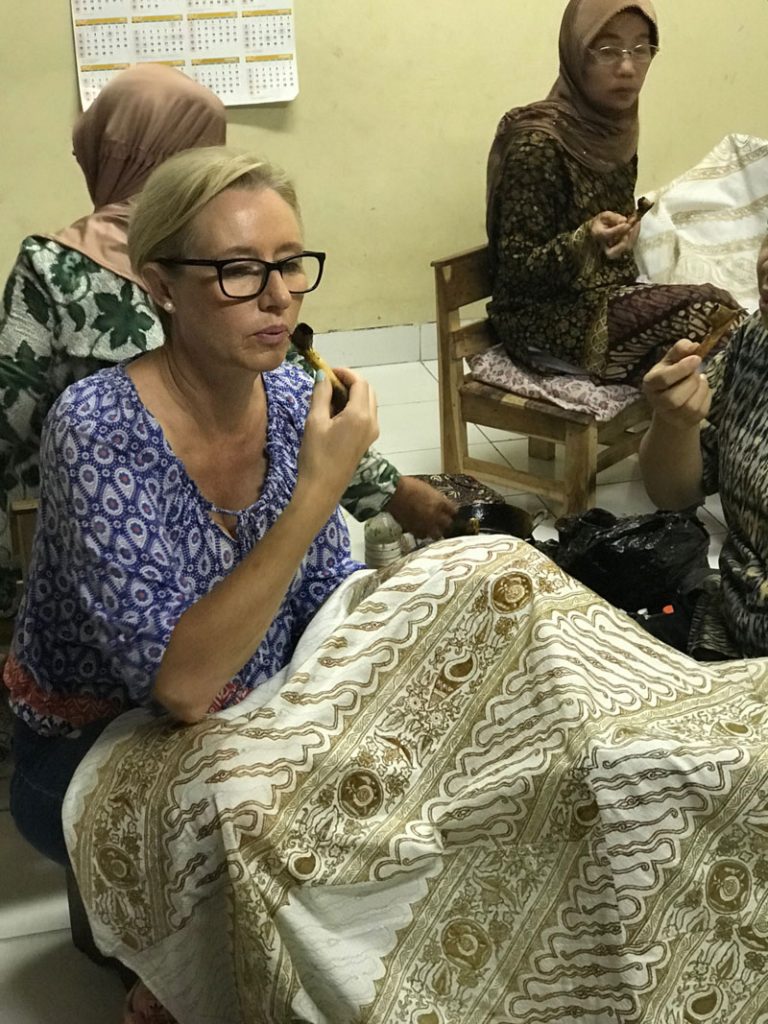
A Royal Heritage Tour of Solo
We recently flew Air Asia to Solo (formerly named Surakarta) in East Java for a few days to explore the heritage and culture of the royal city and to visit the famous antique markets and Batik Museum.
Solo is an elegant, clean city with tree lined streets. I loved the history and the culture; my husband and daughter loved the fireworks shops and the cineplex!
On the first day we were impatient to get to the Triwindu Antique Market, a short becak (cycle rickshaw) ride from our hotel. The complex is stuffed full of small shops and an eclectic collection of delights and surprises. We found a wooden congklak board, elaborately carved with dragon heads and a parade of wooden figures who watched us wandering through the narrow aisles. I bought some metal batik stamps and my husband picked up a rather heavy mortar and pestle once used in an apothecary.
By this time we were hungry- and Solo is famous for its street food. We tried fresh milk (boiled to pasteurise it, then served with ice); Nasi Lewar (possibly Solo’s most well known speciality- a simple dish of rice cooked in coconut milk and chicken broth traditionally made in a clay pot over a wood fire and served with chicken, egg and a thick coconut cream called kumut. Like many dishes from Central Java it was very sweet!); sate kambing (chewy barbecued lamb in a spicy sauce) and the serabi Solo, a small pancake, crispy on the outside and custardy in the centre, with a topping of chocolate.
On the second day, another short becak ride to The House of Danar Hadi – one of the world’s best batik museums. A collection of 11,000 antique and royal textiles from Java, China and beyond are housed within an elegant whitewashed colonial-era building. Proudly displayed in the gift shop is a large photo of the President of Indonesia, Joko Widodo (Jokowi), who was born in Surakarta in 1961.
I was able to visit its workshop where you can watch the creation of beautifully detailed batik cloth. The cotton has pencil outlines from a designer and the craftswomen will take two weeks to draw on it with wax using a bamboo implement called a canting, before it gets dyed.
On the next day we visited the the Mangkunegaran Palace. Dating from 1757, it is the home of the second house of Solo. At the centre of the compound is the pendopo, a pavilion built in a mix of Javanese and European architectural styles. Its high, rounded ceiling was painted in 1937 and is intricately decorated with a central flame surrounded by figures of the Javanese zodiac, each painted in its own mystical colour.
Behind here is the dalem (residence), which forms the palace museum. On display are gold-plated dresses for royal dances, a mask collection, jewellery and a few oddities, including huge Buddhist rings, coins, taxidermied Javanese leopard and tiger, and gold genital covers. We also saw a gold chastity belt with outward facing spikes that males had to wear went they ‘went hunting’.
On our final day, my husband and daughter were happy to go to the Mall and watch a movie, so I asked my driver to take me to see a tea plantation and a Candi Cetho. We ascended steeply to 2600-3000 metres above sea level and I saw growing on the sides of the mountains: flowers, peas, carrots, onions, guava, three types of sweet potato and at least one clove tree.
By the time we reached Candi Cetho, a Hindu temple on the top of Mount Lawu, the valley was shrouded in mist. Built in the fifteenth century at the time of the collapse of the Hindu Majapahit monarchy and the arrival of Islam, it has fourteen terraces connected by narrow stone gates.
It is also a fertility temple, and the driver sheepishly took me to the male and female stone carvings. It was only about 35 kilometres (90 minutes) from Solo but it seemed like a world away.
We all so enjoyed our first trip to Solo that we have been back a couple of times to revisit the antique markets and introduce our friends to the dignified ambience of the city, as well as teaching them the game of congklak!







Leave a Reply